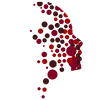Often times, patients are very anxious to eat by mouth following a prolonged period where they had to rely on feeding tube nutrition. This can quickly be replaced with feelings of anxiety as the realization is made that swallowing is now very different.
Fear of choking is a normal and natural response. It’s important to understand, however, that your SLP staff has had years of extensive training and education in this regard. They are your resource for learning about your swallowing problem, determining what you can/can’t safely eat, and developing a plan for rehabilitation.
Realistic goals will be discussed although they may be adjusted as therapy continues. In some cases, the patient progresses beyond what was expected and other times, there may be slower progress appreciated.
As you continue along the rehabilitative process, your SLP will provide you with all the information you need to support your rehabilitative goals, including how to wean from your feeding tube as your swallow function improves.
Many patients are anxious to have their feeding tube removed as soon as possible, however, only your doctor/SLP can determine if and when this is appropriate for you. Once g-tube removal appears to be an appropriate consideration, you will be asked to wean from using it and/or stop using it for feeding entirely. Continue to flush your tube daily until it is removed, even if you are not using it.
Your weight and intake will be monitored once you stop using the feeding tube. If this remains stable, you will be scheduled to have your tube removed. . It is very important you follow these both before and after your appointment.
See G-Tube Removal Instructions. It is very important you follow these both before and after your appointment.
Fear of choking is a normal and natural response. It’s important to understand, however, that your SLP staff has had years of extensive training and education in this regard. They are your resource for learning about your swallowing problem, determining what you can/can’t safely eat, and developing a plan for rehabilitation.
Realistic goals will be discussed although they may be adjusted as therapy continues. In some cases, the patient progresses beyond what was expected and other times, there may be slower progress appreciated.
As you continue along the rehabilitative process, your SLP will provide you with all the information you need to support your rehabilitative goals, including how to wean from your feeding tube as your swallow function improves.
Many patients are anxious to have their feeding tube removed as soon as possible, however, only your doctor/SLP can determine if and when this is appropriate for you. Once g-tube removal appears to be an appropriate consideration, you will be asked to wean from using it and/or stop using it for feeding entirely. Continue to flush your tube daily until it is removed, even if you are not using it.
Your weight and intake will be monitored once you stop using the feeding tube. If this remains stable, you will be scheduled to have your tube removed. . It is very important you follow these both before and after your appointment.
See G-Tube Removal Instructions. It is very important you follow these both before and after your appointment.

